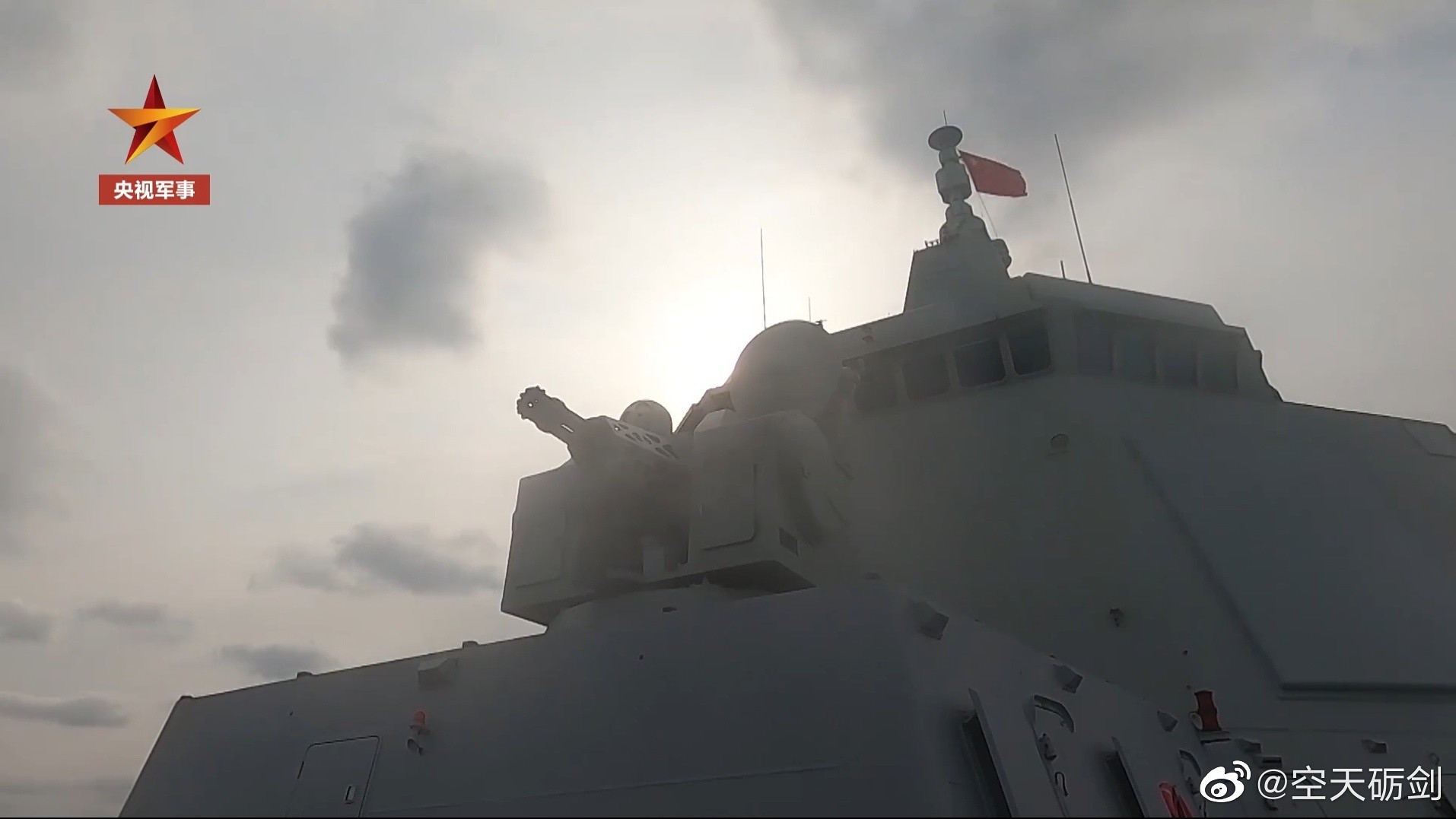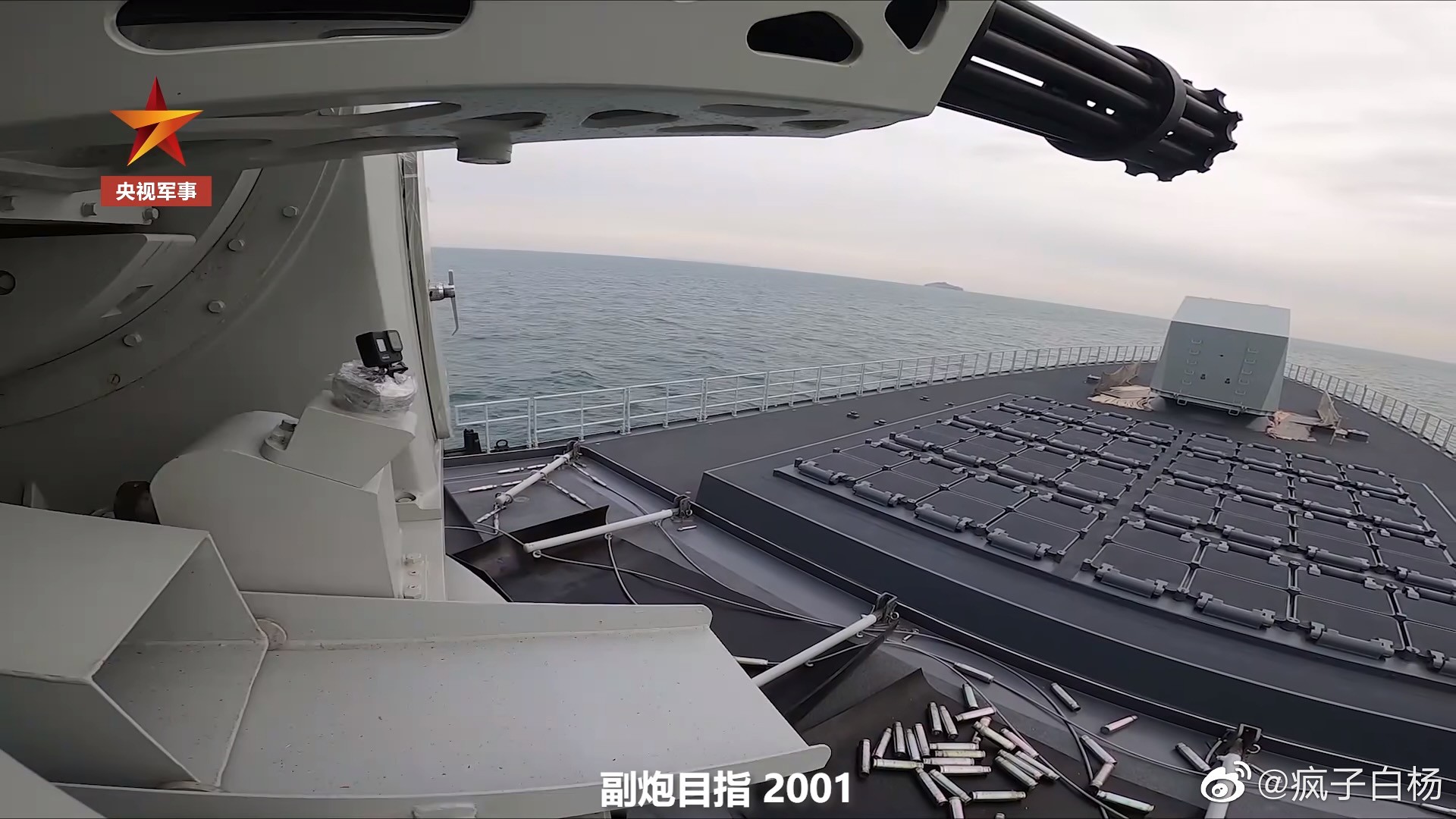To allow higher rotational speed with the same motor? The smaller one has to cover a larger angle than the bigger one.I have never gotten a good theory or speculation as to why one decoy launcher has three rows and the other has four. Does it weigh that much to make the three row one into a four?
You are using an out of date browser. It may not display this or other websites correctly.
You should upgrade or use an alternative browser.
You should upgrade or use an alternative browser.
055 Large Destroyer Thread II
- Thread starter Blitzo
- Start date
To allow higher rotational speed with the same motor? The smaller one has to cover a larger angle than the bigger one.
Probably both a higher elevation and a lower depression angle? This would suggest the second launcher has a different set of decoys from the first.
Does china have any naval air defense missiles comparable to sm-6,sm-2er,and sm-3?
Perhaps try some very basic research before posting here?Does china have any naval air defense missiles comparable to sm-6,sm-2er,and sm-3?
kwaigonegin
Colonel
Since you're a new guy here, the answer is yes but for future reference pls read up on the relevant topics on this site for answers to such basic questions.Does china have any naval air defense missiles comparable to sm-6,sm-2er,and sm-3?
Size wise, the HQ-16 is similar in size to the early SM-2. However, the early SM-2s had a range of 74km, while the early HQ-16 only had a range of 40-45 km. Now most PLA units are getting HQ-16Cs, which have a range of 70 km, so similar to the early SM-2s. As with SM-2ERs and SM-6, Raytheon added rocket boosters to the original missile, allowing them to have ranges of 240km and 370km respectively. The newest version of HQ-16 has a declared range of 160km WITHOUT added rocket boosters, demonstrating China's advancement in solid propellants. The original HQ-16 came from the Russian Buk system, but the newest HQ-16 variants are clearly far more advanced than its Russian grandfather.Does china have any naval air defense missiles comparable to sm-6,sm-2er,and sm-3?
Now, I would imagine if you add a second stage rocket booster to the HQ-16C, you will have similar performance like SM-2ER or SM-6. However, this is not necessary because the PLA already have another long-range SAM called the HQ-9. The original HQ-9 (or HHQ-9 for the PLAN) had a range of 125km, but the new versions have ranges of 200-260km (some argued 290 km), depending on sources. At least the export variant of the HQ-9B has a range of 260km. The HQ-9 system comes from the S-300 series, but with China's continuing advances in solid propellant, I would imagine future HQ-9 variants to have ranges similar to those of S-400 (400km).
The HQ-16 family appears to be marginally better than HQ-9 in intercepting low-altitude incoming cruise missiles. So for HQ-16, range is not so important as to be able to intercept future subsonic and supersonic sea skilling missile (LRASM and Brahmos flying at altitudes of less than 30 meters). The HQ-9's job is mainly regional aerial defense, such as knocking out enemy aircraft (fighters, tankers, bombers, and AWACS) from more than 200km away. It may even have limited anti-ship capabilities (just like the SM-2 and SM-6).
SM-3 is a whole different story. It is anti-space weapon for hitting enemy ballistic missiles and satellites. China may have deployed a version of HQ-19/26 on ships, but we have no imagery confirmation so far. China's equivalent to SM-3s or THAADs (for hitting incoming targets in space) are classified to the point where everyone has to speculate, but we know China has such weapons because the PLA has tested them multiple times.
Size wise, the HQ-16 is similar in size to the early SM-2. However, the early SM-2s had a range of 74km, while the early HQ-16 only had a range of 40-45 km. Now most PLA units are getting HQ-16Cs, which have a range of 70 km, so similar to the early SM-2s. As with SM-2ERs and SM-6, Raytheon added rocket boosters to the original missile, allowing them to have ranges of 240km and 370km respectively. The newest version of HQ-16 has a declared range of 160km WITHOUT added rocket boosters, demonstrating China's advancement in solid propellants. The original HQ-16 came from the Russian Buk system, but the newest HQ-16 variants are clearly far more advanced than its Russian grandfather.
Now, I would imagine if you add a second stage rocket booster to the HQ-16C, you will have similar performance like SM-2ER or SM-6. However, this is not necessary because the PLA already have another long-range SAM called the HQ-9. The original HQ-9 (or HHQ-9 for the PLAN) had a range of 125km, but the new versions have ranges of 200-260km (some argued 290 km), depending on sources. At least the export variant of the HQ-9B has a range of 260km. The HQ-9 system comes from the S-300 series, but with China's continuing advances in solid propellant, I would imagine future HQ-9 variants to have ranges similar to those of S-400 (400km).
The HQ-16 family appears to be marginally better than HQ-9 in intercepting low-altitude incoming cruise missiles. So for HQ-16, range is not so important as to be able to intercept future subsonic and supersonic sea skilling missile (LRASM and Brahmos flying at altitudes of less than 30 meters). The HQ-9's job is mainly regional aerial defense, such as knocking out enemy aircraft (fighters, tankers, bombers, and AWACS) from more than 200km away. It may even have limited anti-ship capabilities (just like the SM-2 and SM-6).
SM-3 is a whole different story. It is anti-space weapon for hitting enemy ballistic missiles and satellites. China may have deployed a version of HQ-19/26 on ships, but we have no imagery confirmation so far. China's equivalent to SM-3s or THAADs (for hitting incoming targets in space) are classified to the point where everyone has to speculate, but we know China has such weapons because the PLA has tested them multiple times.
Thank you for giving a detailed answer instead of just snapping.







